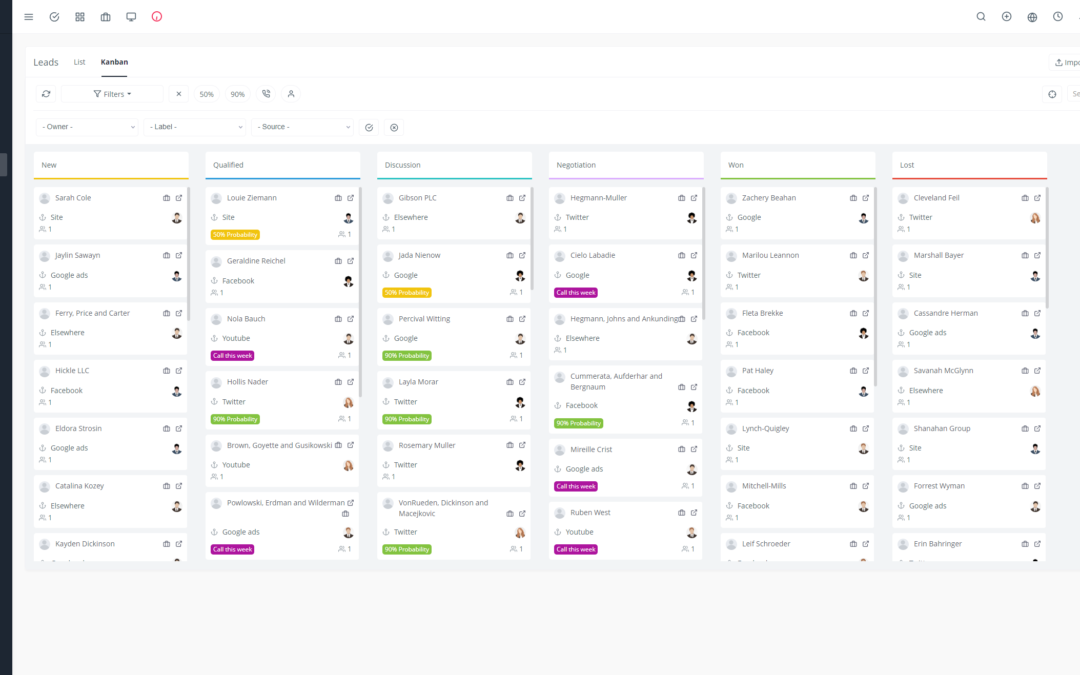The digital age has revolutionized how businesses manage their operations. Today, CRM, ERP, and HR systems have become essential tools for optimizing processes, improving customer satisfaction, and maximizing profitability. But how do these solutions fit into the current business landscape? Let’s dive into key figures and trends to help you make informed decisions.
1. A Booming Market 🚀
Market Size: The global market for CRM, ERP, and HR is projected to reach $439.8 billion by 2027 💰, highlighting its growing importance for businesses.
Growth Rate: This market boasts a compound annual growth rate (CAGR) of 10.6% 📈, meaning it’s continuously expanding and promises strong investment potential.
Key Players: Giants like Salesforce, Oracle, SAP, Microsoft, and Workday dominate the market 🏢. The competition is fierce, meaning businesses have a wide range of options to choose from.
2. Widespread Adoption 🤝
CRM: Over 80% of businesses now utilize a CRM system 💻. This demonstrates the emphasis placed on customer relationship management for business success.
ERP: Nearly 70% of businesses have implemented an ERP system 🏭. Digitizing operational processes has become a necessity to optimize workflows and productivity.
HR: More than 60% of businesses have adopted an HR system 👨💼. Talent management and digitizing human resources have become priorities for businesses.
3. Tangible Benefits for Businesses 🏆
Improved Customer Satisfaction: An effective CRM enables a deeper understanding of customer needs and allows for tailored offerings.
Revenue Increase: An optimized ERP boosts productivity, reduces costs, and improves profitability.
Cost Reduction: Digitalized HR simplifies employee management processes, reduces administrative expenses, and enhances efficiency.
Better Decision Making: Real-time data access and in-depth analytics allow for more informed decisions.
4. Challenges to Overcome 🚧
Implementation Cost: Implementing these systems can be costly, requiring significant investments.
Employee Training: Adequate training is crucial to ensure effective system usage.
Integration with Other Systems: Ensuring interoperability with existing systems is critical to avoid integration issues.
5. Key Trends to Watch 👀
Cloud Computing: Cloud offers increased flexibility and scalability, allowing businesses to deploy and manage solutions more easily.
Artificial Intelligence (AI): AI enables task automation, improved data analysis, and personalized customer experiences.
Automation: Automating processes saves time, increases accuracy, and reduces errors.
6. Key CRM Statistics 📊
Average Conversion Rate: The average conversion rate for businesses using a CRM is 14.6%, compared to 8.5% for those who don’t.
Customer Lifetime Value: A CRM increases customer lifetime value, representing a significant advantage for businesses.
Customer Acquisition Cost: CRM reduces customer acquisition cost by optimizing marketing campaigns and sales efforts.
7. Key ERP Statistics 📊
Production Cycle Time: An effective ERP reduces production cycle time and improves process efficiency.
Labor Cost: Process optimization and error reduction through ERP contribute to reduced labor costs.
Employee Satisfaction: A well-integrated ERP can enhance employee satisfaction by simplifying tasks and improving their productivity.
8. Key HR Statistics 📊
Employee Retention Rate: Effective HR improves employee retention by offering a better experience and development opportunities.
Employee Turnover Cost: HR reduces employee turnover cost by improving communication, talent management, and retention.
Employee Satisfaction: Modern HR contributes to improved employee satisfaction by streamlining processes, offering powerful tools, and fostering better communication.
9. Benefits of Integrating CRM, ERP, and HR 🤝
Better Communication and Collaboration: Integration enables different departments within a company to share information and collaborate more effectively.
More Informed Decision Making: Access to a comprehensive view of data from various systems facilitates more informed and strategic decisions.
Improved Efficiency: Integration allows for process automation, error reduction, and overall enhanced efficiency.
10. Tips for Choosing the Right CRM, ERP, or HR 💡
Define Your Needs and Goals: Identify the problems you want to solve and the results you aim to achieve.
Evaluate Available Options: Compare different solutions based on your needs, budget, and goals.
Get Customer Testimonials:* Inquire about the experience of other businesses who have already used the solutions you’re considering.
Conclusion 🎯
Investing in CRM, ERP, and HR solutions is now crucial for businesses seeking to stand out in a competitive market. Digitalized processes, improved customer satisfaction, and maximized profitability are key benefits that make these systems strategic tools. The future of these solutions is promising with the emergence of technologies like AI and automation, which will make them even more powerful and efficient.
By considering the key figures and trends presented in this article, businesses can make informed decisions regarding their digital strategy and ensure they benefit from the numerous advantages offered by CRM, ERP, and HR solutions. 💪

